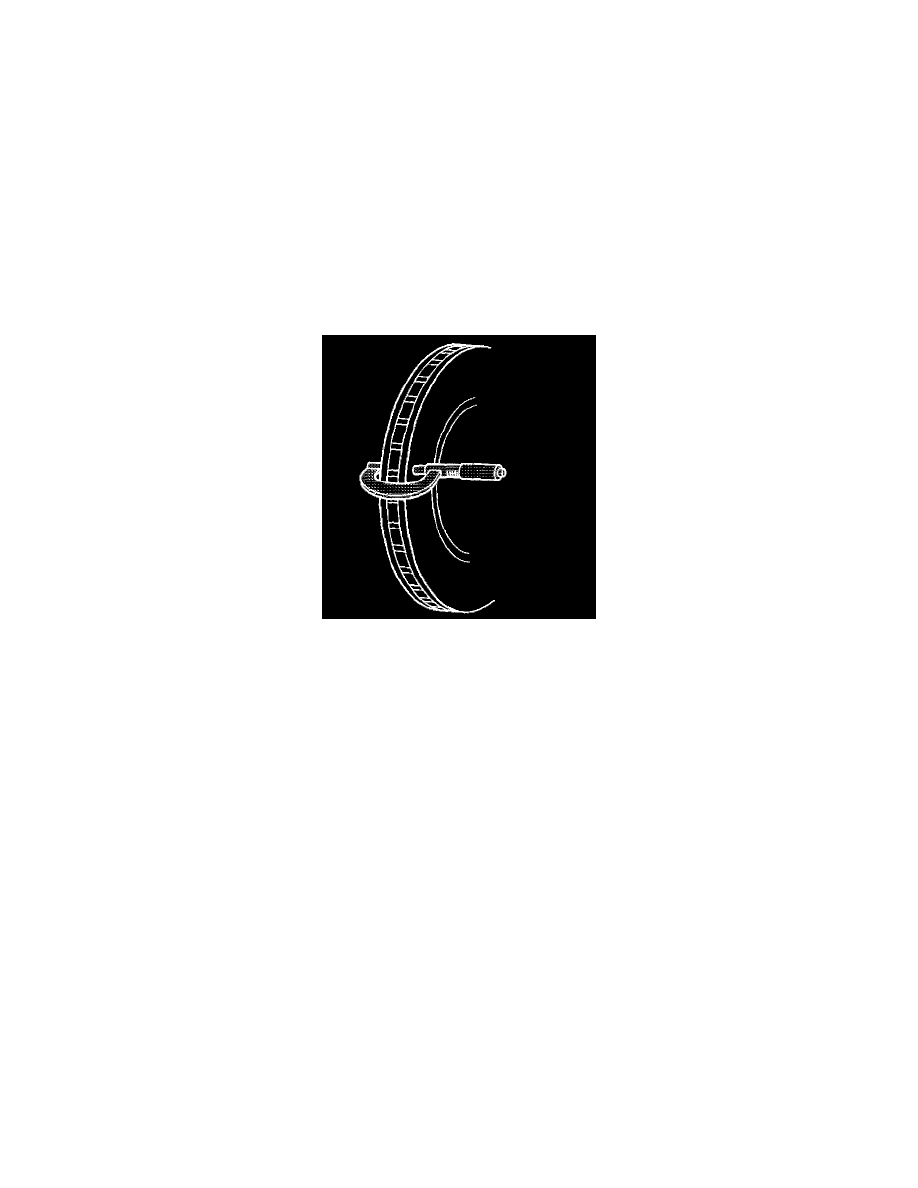Yukon XL 2500 4WD V8-6.0L VIN N (2006)

Brake Rotor/Disc: Testing and Inspection
Brake Rotor Surface and Wear Inspection
Brake Rotor Surface and Wear Inspection
Caution: Refer to Brake Dust in Service Precautions.
1. If the inboard friction surface of the brake rotor is not accessible, reposition and support the caliper with the brake pads. Refer to Brake Pads
Replacement Front and/or Brake Pads Replacement - Rear See: Brake Pad
2. Clean the friction surfaces of the brake rotor with denatured alcohol, or an equivalent approved brake cleaner.
3. Inspect the friction surfaces of the brake rotor for the following Braking Surface Conditions:
^
Heavy rust and/or pitting
Light surface rust can be removed with an abrasive disc. Heavy surface rust and/or pitting must be removed by refinishing the rotor.
^
Cracks and/or heat spots
^
Excessive blueing discoloration
4. If the friction surfaces of the brake rotor exhibit one or more of the Braking Surface Conditions, the rotor requires refinishing or replacement.
5. Using a micrometer calibrated in thousandths-of-a-millimeter, or ten-thousandths-of-an-inch, measure and record the scoring depth of any grooves
present on the rotor friction surfaces.
6. Compare the groove scoring depth recorded to the following specification:
Brake rotor maximum allowable scoring: 1.50 mm (0.059 inch)
7. If the brake rotor scoring depth exceeds the specification, or if an excessive amount of scoring is present, the rotor requires refinishing or
replacement.
